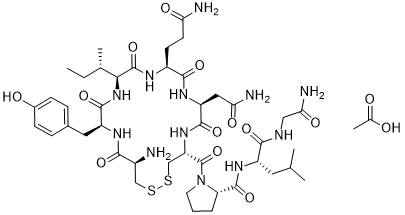HCC cell lines as well as in 16 matched clinical fresh tissues. Many F-box proteins such as FBXW7, FBXL2, FBX4 and FBXO11 are found to be lost in a wide range of human cancers, and generally considered as tumor suppressor genes. Our data also clearly demonstrate the decreased expression of FBX8 in HCC. Then we examined the clinicopathological values of FBX8 in HCC tissues. In many clinicopathologic features, differentiation and serum AFP were correlated strongly with FBX8 expression. Low FBX8 protein level was a significant prognostic factor for poor overall survival in HCC patients. Moreover, FBX8 expression, portal vein thrombosis, differentiation and dissemination were singled out as four marked and independent prognostic factors relative to overall survival from multivariate analysis. Besides FBX8 expression, the three other factors are well-acknowledged  indicators in the progression of HCC. These data indicate that FBX8 expression is associated with the progression of HCC and an independent prognostic marker for survival of HCC patients. Recent evidence suggests an important role for several F-box proteins in modulating cancer progression. FBXW7 can ubiquitinate c-Myc and cyclin E, proliferation of colorectal cancer. Human F-box protein hCdc4 also targets cyclin E for proteolysis. Moreover, inactivation of Fbxw7 attenuates TGF b-dependent regulation of cell growth and migration of breast cancer. miR-223 targets FBXW7/hCdc4 expression at the post-transcriptional level and appears to regulate cellular apoptosis, proliferation, and invasion in gastric cancer. S-phage kinase-associated protein 2 and Myc coordinate to induced RhoA transcription and promote breast cancer metastasis. We next explored the possible function of FBX8 in the progression of HCC. The results showed that forced expression of FBX8 in HepG2 and 97H cells increased cancer cell proliferation, motility and invasion in vitro. Depletion of FBX8 in 7721 cells showed the opposite effects. We also showed that FBX8 negatively correlated with cell proliferation and invasion in 7701, M3, HepG2 and 97H cell lines, but not in 7721 cells, which had the highest FBX8 expression, proliferation and relatively low invasive ability. In vivo functional results showed that ectopic FBX8 obviously suppressed subcutaneous tumor growth and yielded more and larger metastatic nodules in the lung compared to mock cells. Thus, the above results provide evidence that FBX8 can function as a suppressor in invasion and metastasis of HCC. The molecular mechanisms of FBX8 in HCC progression need to be further investigated. In summary, our study demonstrates that down-regulation of FBX8 in HCC correlates with poor survival of patients. All of the functional experiments confirm FBX8 as a tumor suppressor in the progression of HCC. The preferential down-regulation of FBX8 in HCC patients with invasion and metastasis suggested that FBX8 may be a significant biomarker for HCC progression.
indicators in the progression of HCC. These data indicate that FBX8 expression is associated with the progression of HCC and an independent prognostic marker for survival of HCC patients. Recent evidence suggests an important role for several F-box proteins in modulating cancer progression. FBXW7 can ubiquitinate c-Myc and cyclin E, proliferation of colorectal cancer. Human F-box protein hCdc4 also targets cyclin E for proteolysis. Moreover, inactivation of Fbxw7 attenuates TGF b-dependent regulation of cell growth and migration of breast cancer. miR-223 targets FBXW7/hCdc4 expression at the post-transcriptional level and appears to regulate cellular apoptosis, proliferation, and invasion in gastric cancer. S-phage kinase-associated protein 2 and Myc coordinate to induced RhoA transcription and promote breast cancer metastasis. We next explored the possible function of FBX8 in the progression of HCC. The results showed that forced expression of FBX8 in HepG2 and 97H cells increased cancer cell proliferation, motility and invasion in vitro. Depletion of FBX8 in 7721 cells showed the opposite effects. We also showed that FBX8 negatively correlated with cell proliferation and invasion in 7701, M3, HepG2 and 97H cell lines, but not in 7721 cells, which had the highest FBX8 expression, proliferation and relatively low invasive ability. In vivo functional results showed that ectopic FBX8 obviously suppressed subcutaneous tumor growth and yielded more and larger metastatic nodules in the lung compared to mock cells. Thus, the above results provide evidence that FBX8 can function as a suppressor in invasion and metastasis of HCC. The molecular mechanisms of FBX8 in HCC progression need to be further investigated. In summary, our study demonstrates that down-regulation of FBX8 in HCC correlates with poor survival of patients. All of the functional experiments confirm FBX8 as a tumor suppressor in the progression of HCC. The preferential down-regulation of FBX8 in HCC patients with invasion and metastasis suggested that FBX8 may be a significant biomarker for HCC progression.
Inhibitors targeting FBX resulting in exit from the cell cycle and subsequently inhibit cell
Leave a reply